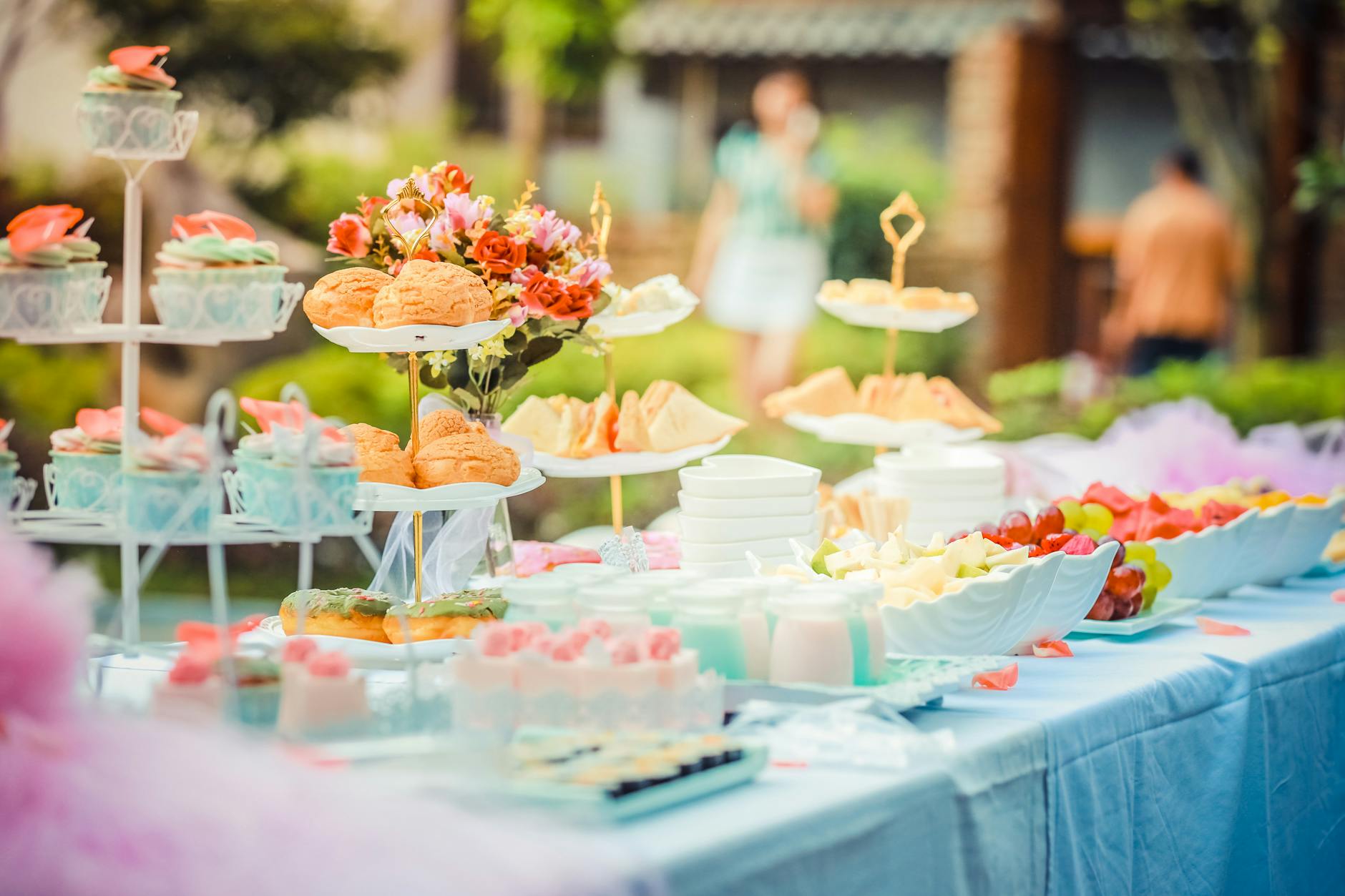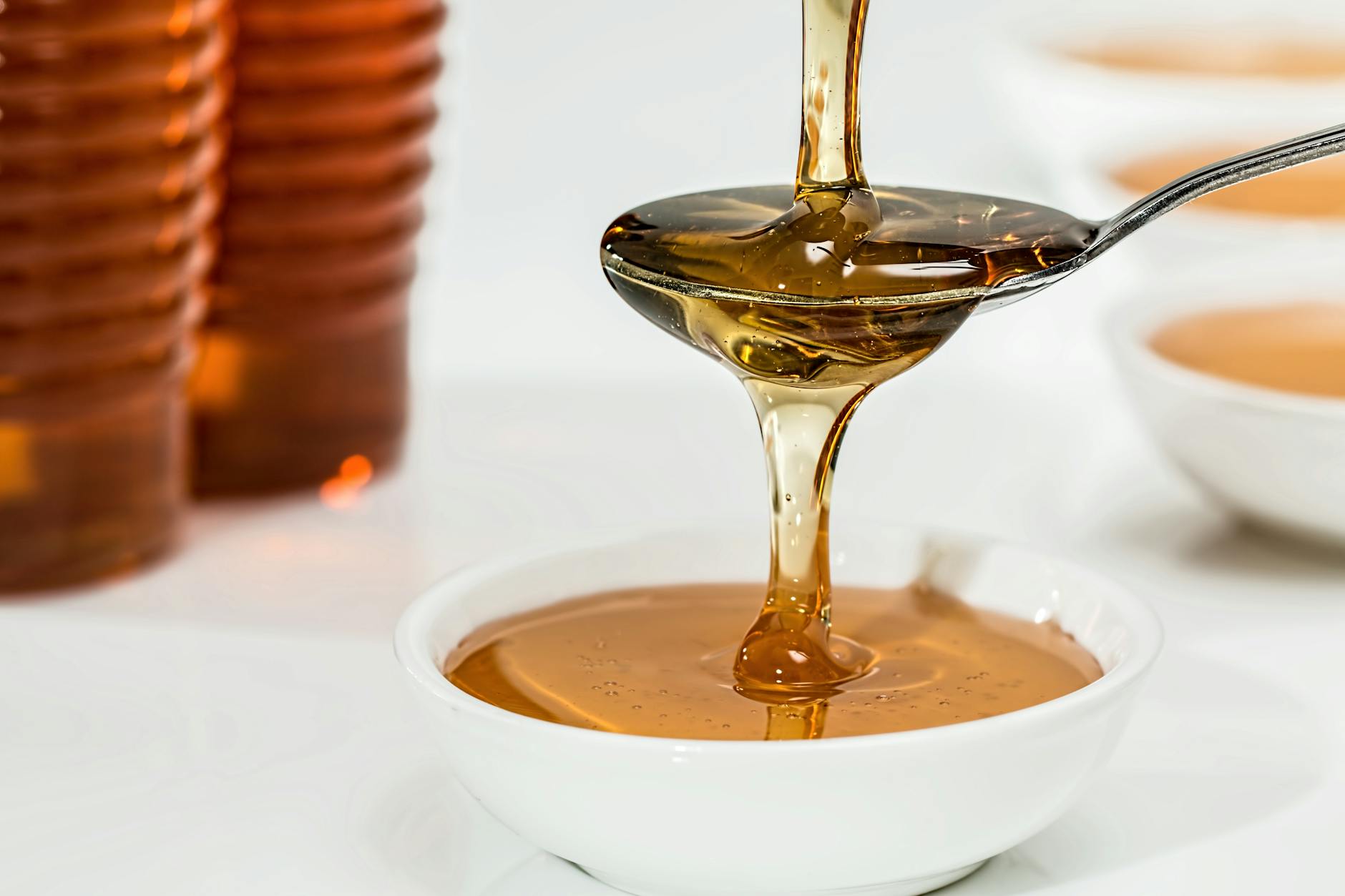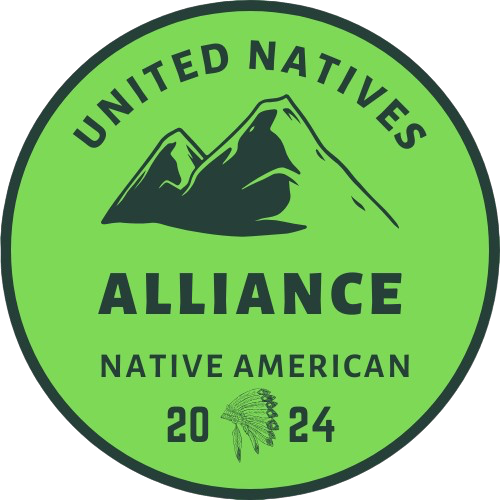10 Native American Sweets You Must Try Today
Ever tasted pemmican and thought, “Wow, Native Americans were flavor geniuses”? If not, you’re missing out on centuries of culinary magic that most food blogs completely ignore.
I’m about to take you on a sugar-dusted journey through 10 incredible Native American sweets that deserve way more attention than they get. These aren’t just desserts – they’re edible history lessons packed with flavors that have sustained cultures for generations.
From maple sugar candies that make store-bought sweets taste like plastic to wild berry desserts that’ll make your taste buds do a happy dance, Native American sweets offer something that mass-produced treats never could – authenticity.
But which of these traditional treats has actually influenced the candy bars sitting in your pantry right now? The answer might surprise you.
Understanding Native American Culinary Traditions
The historical significance of sweets in Native American culture
Ever wonder why sweet treats have such a special place in Native American gatherings? Long before European contact, indigenous peoples created unique confections that weren’t just delicious—they were sacred.
Sweet foods weren’t everyday indulgences. They marked special occasions, ceremonies, and celebrations that brought communities together. When a tribe completed a successful hunt or celebrated a bountiful harvest, sweet treats would make an appearance as offerings of gratitude to creator spirits.
Maple sugar candy stands out as one of the oldest sweet traditions. Many northeastern tribes discovered the magic of tapping maple trees and boiling down the sap centuries before Europeans arrived. These weren’t just treats—they were survival foods packed with quick energy for harsh winters.
Regional variations across different tribes
The sweet flavors of Native America change dramatically depending on where you stand on this continent.
In the Northeast, the Haudenosaunee (Iroquois) perfected maple candies and sweetened nut mixtures. Head southwest, and you’ll find Apache and Navajo communities creating delicacies from prickly pear and agave.
Pacific Northwest tribes? They mastered berry-based sweets using huckleberries and salal. Meanwhile, tribes in the Plains region created pemmican—a concentrated mixture of dried meat, fat, and berries that provided both nutrition and a touch of sweetness.
Traditional ingredients and their nutritional benefits
The genius of Native American sweets lies in their natural ingredients. No processed sugar here—just pure goodness from:
- Berries: Packed with antioxidants and vitamins
- Maple sap: Rich in minerals like manganese and zinc
- Honey: A natural antibacterial with enzyme benefits
- Nuts: Providing protein and healthy fats
- Corn: Offering complex carbohydrates and fiber
These ingredients weren’t chosen just for taste—they delivered serious nutritional punch. Take wild berries, for instance. They provided essential vitamins during winter months when fresh food was scarce. Or consider corn, a staple ingredient transformed into sweet puddings that delivered sustained energy.
Frybread: The Versatile Foundation
Origins and cultural importance
Frybread isn’t just food—it’s living history on a plate. Born from tragedy when Native Americans were forced onto reservations with government-issued flour, sugar, and lard, they created something remarkable from these limited ingredients.
The story goes back to the 1860s during the Long Walk, when Navajo people were forcibly relocated. Facing starvation, they transformed basic rations into what we now know as frybread. Talk about making something beautiful from next to nothing.
Every tribe has their own spin on this staple. Some make it thick and fluffy, others prefer it thin and crispy. But all versions share that golden-brown exterior that crackles when you break it open.
At powwows and celebrations, the frybread stand always has the longest line. It’s where stories get passed down, where elders teach younger generations the perfect technique. One bite connects you to centuries of resilience.
How to enjoy it as a sweet treat
Frybread transforms into dessert heaven with just a few simple additions.
The classic way? Drizzle it with honey while it’s still hot so it soaks right into those airy pockets. Pure bliss.
Try it dusted with powdered sugar and cinnamon for a Native American take on a churro. Or go all out with:
- Honey butter (whipped until fluffy)
- Berry compote with seasonal fruits
- Maple syrup (the real stuff)
- Chocolate sauce with crushed nuts
Some folks make “Indian tacos” as a sweet version too—just swap the savory toppings for sliced bananas, strawberries, and a dollop of whipped cream.
Where to find authentic frybread today
Finding the real deal means going straight to the source.
Tribal powwows and cultural festivals are frybread paradise. The Annual Navajo Nation Fair in Window Rock, Arizona serves some of the most authentic versions you’ll ever taste.
Many Native-owned restaurants specialize in traditional foods. Check out places like Tocabe in Denver or The Sioux Chef’s enterprises if you’re looking for elevated versions with modern twists.
Roadside stands throughout the Southwest and Plains states often have the best frybread around. Those little unassuming spots with smoke rising from outdoor cooking stations? That’s where the magic happens.
Easy homemade recipe tips
Making frybread at home isn’t complicated, but there are secrets to getting it right.
Start with the basics: flour, baking powder, salt, and warm water. The dough should feel slightly sticky but still workable with floured hands.
The game-changer? Let that dough rest. Twenty minutes minimum. This relaxes the gluten and gives you that perfect texture.
Oil temperature matters big time. Too cool and it gets soggy; too hot and it burns before cooking through. Aim for 350-375°F—hot enough that a small piece of dough floats and bubbles immediately.
Work the dough thin—about 1/4 inch thick. Use your fingers to create a small hole in the center (this prevents the bread from puffing up too much and helps it cook evenly).
When golden brown on both sides, drain on paper towels, then serve immediately while still warm for that perfect sweet treat experience.
Wild Berry Desserts

Wojapi: The traditional berry pudding
Ever tried Wojapi? It’s a mind-blowing Native American berry pudding that’ll make your taste buds dance. This thick, jam-like dessert combines wild berries—typically chokecherries, blueberries, strawberries, and juneberries—into a sweet, deeply flavorful treat that’s been enjoyed for centuries.
The beauty of Wojapi lies in its simplicity. Traditionally, tribes would gather seasonal berries, mash them, and cook them down with just a touch of sweetener (nowadays maple syrup or honey). No fancy ingredients or complicated techniques—just pure berry goodness that packs an incredible punch of flavor.
Each tribal nation has their own spin on this classic. Some thicken it with cornstarch, others leave it more sauce-like. You’ll find it served alongside frybread, used as a dipping sauce, or simply enjoyed by the spoonful.
What makes Wojapi special isn’t just its taste—it’s the connection to the land. These wild berries were (and still are) harvested during specific seasons, creating a dessert that’s intrinsically tied to Native American relationships with nature and seasonal cycles.
Chokecherry jellies and syrups
Chokecherries might pucker your mouth when raw, but Native Americans discovered how to transform these tart little fruits into something magical.
The deep purple-black chokecherry is a staple in traditional food gathering. After careful harvesting (leaving plenty for birds and wildlife), the berries undergo a remarkable transformation. The resulting jellies and syrups are rich, complex, and nothing like anything you’ll find at the supermarket.
Chokecherry jelly has this gorgeous ruby color and balances sweetness with a subtle tartness that commercial jellies can’t touch. The syrup? Liquid gold. Drizzle it over frybread or pancakes and you’ll wonder how you lived without it.
What’s cool is that chokecherry processing requires serious know-how. The pits contain compounds that need proper handling, showcasing the sophisticated food knowledge Native communities have developed over thousands of years.
Blackberry and blueberry preparations
Wild blackberries and blueberries are smaller but pack way more flavor than their store-bought cousins. Native American communities have perfected countless ways to showcase these flavor bombs.
Dried blueberries became essential winter nutrition, concentrated little bursts of sweetness and nutrients when fresh foods were scarce. Blackberries were often mixed with other ingredients for medicine and food.
One amazing preparation is berry dumplings, where the berries are wrapped in a light cornmeal dough and boiled or steamed. The juice seeps into the dough, creating this incredible purple-stained dumpling that’s both sweet and hearty.
Some tribes create berry cakes by drying and pressing the berries into compact, transportable nutrition that could last through winter journeys. These weren’t just desserts—they were survival food that happened to taste amazing.
The gathering of these berries remains culturally significant, with harvesting techniques passed down through generations. It’s not just food—it’s heritage in every bite.
Maple-Based Delicacies

Traditional maple sugar candy
Maple sugar candy isn’t just sweet – it’s a direct connection to centuries of Native American ingenuity. Before Europeans arrived, indigenous peoples of the Northeast were already tapping maple trees and converting the sap into sugar.
The candy-making process is pretty straightforward but requires perfect timing. The concentrated syrup gets heated past the syrup stage until it reaches that magic temperature where, when cooled quickly and stirred, it crystallizes into a smooth, crumbly texture that melts in your mouth.
What makes this candy special? It’s 100% pure maple – no additives, no artificial anything. Just concentrated tree goodness that captures spring in a bite.
Maple syrup snow cones
Talk about the original frozen dessert! Native Americans discovered that pouring hot maple syrup over fresh snow created an instant treat with a unique texture.
This snow candy (or “sugar on snow” as it’s sometimes called) creates a chewy, taffy-like consistency when the syrup hits the cold snow. The temperature difference causes the syrup to thicken instantly, creating stretchy, sweet strands.
Many Northeastern tribes would celebrate the first maple harvest with this simple but delicious treat. Today, it remains a beloved winter tradition in many areas where maple is harvested.
Modern maple-infused adaptations
The rich tradition of maple has evolved into countless modern treats that honor the original. Native-owned businesses are leading the way with innovations like:
- Maple cream infused with traditional herbs
- Maple-sweetened chocolate bars
- Maple-glazed nuts incorporating foraged ingredients
- Maple beverages blending traditional and contemporary flavors
These adaptations maintain cultural connections while appealing to modern palates.
The maple harvesting process
The maple harvest follows the same natural rhythms that Native Americans observed centuries ago. When days warm but nights stay freezing, the sap begins to flow.
Traditionally, birch bark containers collected sap from wooden taps. The gathered sap was then concentrated by dropping hot stones into the containers or through freezing, where the water ice could be removed leaving concentrated sugars behind.
Today’s indigenous harvesters often blend traditional knowledge with modern methods. Many still observe ceremonial practices before the first tapping, honoring the trees that provide this sweet gift and acknowledging that the maple spirit’s generosity requires respect and gratitude.
Three Sisters Sweets
Corn pudding variations
You haven’t lived until you’ve tasted authentic Three Sisters corn pudding. The original comfort food of countless Native American tribes, these puddings blend sweet and savory in ways that’ll make you wonder why they aren’t on every restaurant menu in America.
Traditional Mohawk corn pudding uses dried corn soaked in ash water (to release nutrients) before being sweetened with maple syrup and berries. The Hopi version? They fold in sunflower seeds for a nutty crunch that perfectly balances the sweetness.
My favorite has to be the Seneca-style pudding where they mix in bits of dried apple. The tartness cuts through the sweetness in the most satisfying way.
Bean-based sweet treats
Think beans are just for savory dishes? Think again. Native Americans transformed beans into desserts long before modern “healthy sweets” became trendy.
The Cherokee make this mind-blowing sweet bean bread using navy beans, cornmeal, and maple sugar. It’s dense, moist, and nothing like what you’d expect.
The Oneida created sweet bean cakes by mashing beans with berries and honey, then drying them into portable treats. Honestly, they were the original energy bars.
Squash desserts that surprise the palate
Squash desserts will completely flip your understanding of this humble vegetable.
The Abenaki make a butternut squash custard that puts pumpkin pie to shame. They blend squash with wild ginger, maple syrup, and hickory nuts for a dessert that’s simultaneously familiar and totally unique.
Haudenosaunee (Iroquois) squash cookies combine dried summer squash with dried cherries and sunflower seeds. They’re chewy, sweet, and packed with flavors that dance on your tongue.
The Lenape make a delicious squash and cranberry pudding that balances sweet, tart, and earthy notes perfectly.
Nut and Seed Confections
A. Pinon nut brittle from the Southwest
Ever tried a sweet that tells the story of desert landscapes? Pinon nut brittle is the Southwest’s answer to peanut brittle, but with a wild, earthy twist that’ll make your taste buds do a happy dance.
The Navajo, Hopi, and Pueblo peoples have harvested these tiny, resinous nuts from pinon pine trees for centuries. They’re a pain to gather—you’ve got to wait for the pine cones to open, then extract each little nugget by hand. But trust me, the flavor is worth every minute of that labor.
Traditional pinon brittle combines these buttery nuts with mesquite honey or prickly pear syrup, creating a sweet that’s simultaneously crunchy and melt-in-your-mouth delicious. The slight pine-like essence gives it a complexity you just don’t find in commercial candy.
B. Black walnut treats from Eastern tribes
Black walnuts are not your average nut. They’re the rebellious cousin of the English walnut—intense, wild, and unapologetically bold. Cherokee, Iroquois, and other Eastern woodland tribes knew exactly how to tame these powerful nuts into something magical.
The shells are incredibly hard (you could crack a tooth trying to open one), but inside lies a flavor bomb that puts regular walnuts to shame. When mixed with maple syrup and formed into small patties or bars, they create a dessert that’s rich, complex, and slightly tannic.
Some tribes would mix them with dried berries for added sweetness and texture. Others would pound them into flour for cakes. The distinctive flavor is unmistakable—once you taste it, you’ll never forget it.
C. Sunflower seed candies
Before Europeans brought sugar to North America, the Plains tribes were creating delicious sunflower seed treats that would give modern candy bars a run for their money.
The Mandan, Hidatsa, and other Plains peoples cultivated massive sunflower fields, harvesting the seeds not just for oil but for sweets. They’d roast the seeds, grind them into a paste, and mix them with wild honey, dried fruit, or corn syrup.
The resulting treats were formed into small balls or bars—perfect portable energy snacks for hunters and travelers. Some recipes included dried cherries or chokecherries for a tart contrast to the nutty sweetness.
Today’s versions might incorporate modern ingredients like vanilla or cinnamon, but the heart of this candy remains unchanged—simple, nutritious, and surprisingly addictive.
Wild Rice Desserts
Wild Rice Pudding with Berries
Wild rice pudding isn’t just any dessert – it’s a celebration in a bowl. This creamy, nutty treat combines the earthiness of wild rice with the sweetness of seasonal berries that Native Americans have harvested for centuries.
The texture is what makes this dessert unforgettable. The wild rice pops slightly between your teeth while swimming in a silky custard. Traditionally, maple syrup is used as the sweetener, adding a complex sweetness that white sugar just can’t match.
Want to make it authentic? Throw in some blueberries, strawberries, or blackberries that grow naturally across tribal lands. These aren’t just for color – they add tartness that cuts through the richness perfectly.
Crispy Wild Rice Treats
Think rice krispie treats but with serious upgrade points. Crispy wild rice treats take the popped, nutty goodness of cooked wild rice and bind it with honey or maple syrup instead of marshmallows.
Some tribal versions include crushed nuts like black walnuts or pine nuts for extra crunch. The result? A portable, satisfying sweet that’s been sustaining people through winters long before convenience stores existed.
What makes these treats special is the contrast – crunchy yet chewy, sweet yet earthy. They’re perfect trail food that doesn’t melt in summer heat.
The Nutritional Benefits of Wild Rice in Sweets
Wild rice isn’t actually rice at all – it’s an aquatic grass seed packed with protein, fiber, and antioxidants. When you’re eating wild rice desserts, you’re basically having the healthiest sweet option on the table.
With more protein than white or brown rice, these desserts keep you full longer. They’re also naturally gluten-free, making them perfect for modern dietary needs while staying true to tradition.
The manganese content helps your body process carbohydrates and absorb the natural sugars more slowly – meaning no sugar crash an hour after eating.
Where to Source Authentic Wild Rice
True wild rice – the kind that makes these desserts special – isn’t the cultivated stuff in grocery stores. For the real deal, look to tribally harvested rice from Minnesota, Wisconsin, or parts of Canada.
Many Native American communities harvest rice by hand using traditional methods – gently knocking ripe grains into canoes. This sustainable practice preserves both the plant beds and the cultural heritage.
Several tribal cooperatives sell authentic wild rice online, with proceeds supporting indigenous communities. The difference in flavor is remarkable – deeper, smokier, and more complex than commercial varieties.
Pemmican and Modern Adaptations
Traditional pemmican as a sweet-savory option
Pemmican might be the original energy bar. Tribes across North America created this perfect blend of fat, protein, and just enough sweetness to keep you going during long hunts or harsh winters. The traditional version combines dried meat (usually bison or deer) pounded into powder, mixed with melted fat and—here’s where the sweetness comes in—dried berries like chokecherries, blueberries, or saskatoons.
What makes pemmican special isn’t fancy ingredients but the balance. The berries cut through the richness with their natural sweetness and slight tartness. No sugar needed. Just pure, functional food that happens to taste amazing.
Fruit-forward pemmican varieties
Some tribes took the sweet side of pemmican and ran with it. These fruit-heavy versions use more berries than meat, creating something closer to what we’d call a fruit leather today.
Blackfoot and Cree traditions sometimes included versions with cranberries and saskatoon berries dominating the mix, with just enough fat to bind it together. The result? A chewy, tangy-sweet treat that preserved summer’s bounty year-round.
Try making a simple version at home by mixing:
- 1 cup dried berries (cranberries work great)
- 2 tablespoons honey
- 3 tablespoons rendered beef tallow or coconut oil
Contemporary energy bars inspired by pemmican
Walk into any health food store today and you’ll spot pemmican’s descendants everywhere. Modern energy bars owe everything to this Native American innovation.
Several Indigenous-owned companies now produce authentic pemmican-inspired bars. These updated versions stay true to the original concept while making adjustments for today’s tastes:
- Tanka Bars blend buffalo meat with cranberries
- Sweetwood Cattle Company makes jerky with fruit inclusions
- Paleo-friendly companies offer meat bars with dried fruits
The difference between authentic pemmican and grocery store protein bars? Real pemmican contains rendered fat—the element modern versions typically skip. But that fat is exactly what made pemmican such perfect survival food, providing slow-burning energy when it mattered most.
Ceremonial and Celebratory Sweets
A. Sweets prepared for specific tribal celebrations
Tribal celebrations call for special treats that go beyond everyday fare. The Pueblo people serve Piñon Nut Cookies during winter solstice ceremonies, combining pine nuts with honey in a recipe passed down for generations.
During Navajo Kinaalda ceremonies (a girl’s coming-of-age), families prepare Alkaan, a sweet cornmeal cake cooked overnight in an earthen pit. The young woman helps make this treat, learning cultural wisdom in the process.
For powwows across many tribes, wild berry puddings steal the show. Each tribe has their signature version – the Ojibwe fold blueberries into wild rice pudding, while the Potawatomi create stunning layered berry desserts with maple sugar between each colorful tier.
B. The spiritual significance of certain ingredients
In Native American traditions, ingredients aren’t just food – they’re connections to the divine.
Maple sugar isn’t merely sweet – it represents the first gift of spring, a sign of survival after winter. The Haudenosaunee (Iroquois) consider maple sap the blood of the Creator, which is why maple candy making involves ceremony and gratitude.
Corn holds perhaps the deepest spiritual meaning. The Hopi’s blue corn piki bread, though more staple than dessert, transitions into ceremonial sweet versions when mixed with wild honey and berries.
The chokecherry appears in Dakota spiritual stories. Their traditional pudding, made by pounding these berries with honey, connects eaters to ancestral wisdom and the land’s bounty.
C. Seasonal desserts tied to harvest times
Native sweets follow nature’s calendar, not the supermarket’s.
Fall brings berry and nut harvests, when the Cherokee prepare Ku-nu-che, a rich walnut-based sweet bread that stores well through winter. Meanwhile, Pacific Northwest tribes celebrate salmon berry season with quick-preserved berry cakes mixed with rendered fat – energy-dense treats that powered coastal communities.
Summer’s wild strawberries inspire the Potawatomi to make a special pudding called Daemin, only prepared when these tiny, intense berries briefly appear. The ephemeral nature of the dessert makes it especially precious.
Winter calls for preserved treats. The Navajo enjoy dried peach leather, sometimes reconstituted into warm puddings during storytelling ceremonies when families gather close.
D. How traditions vary by region
The geography of Native nations shapes their sweet traditions dramatically.
Desert tribes like the Tohono O’odham craft saguaro cactus fruit syrup into crystallized candies, using techniques that maximize precious desert sweetness. Their neighbors to the east, the Apache, create acorn flour cookies sweetened with mesquite pod flour.
In the Eastern Woodlands, the Wampanoag and other tribes developed cranberry fritters, using the tart berries that flourish in coastal bogs.
Northern tribes perfected maple techniques, with the Anishinaabe creating intricate maple sugar sculptures for special ceremonies.
Pacific coastal communities incorporate unique elements like dried salmon berries and even seaweed in some ceremonial puddings, reflecting their ocean-connected lifestyles.
Mountain tribes use different elevation zones to their advantage, harvesting huckleberries, elderberries, and chokecherries at different times to create a progression of seasonal sweets that mark the year’s passage.
Where to Experience Authentic Native American Sweets
Notable Native American restaurants and bakeries
Looking for a taste of authentic Native cuisine? You’re in luck. There are some incredible Native-owned spots across the country serving up traditional sweets with modern twists.
Tocabe in Denver is a must-visit. Their wild berry pudding topped with maple cream will change your life. No exaggeration.
In Minneapolis, check out Owamni by The Sioux Chef, where Sean Sherman and his team create desserts using pre-colonial ingredients. Their sunflower and amaranth cookies? Mind-blowing.
Kai Restaurant in Arizona offers high-end Native cuisine with desserts featuring traditional ingredients like mesquite, cholla buds, and prickly pear.
For something more casual, swing by Pueblo Harvest in Albuquerque. Their blue corn pudding is the perfect blend of traditional and contemporary flavors.
Powwows and cultural events featuring traditional foods
Powwows aren’t just amazing cultural experiences—they’re also food paradise. The Denver March Powwow serves up some of the best frybread you’ll ever taste, often topped with honey or berries.
The Gathering of Nations in Albuquerque is another foodie dream. Vendors from dozens of tribes bring their signature sweets, from Navajo frybread to Apache acorn cookies.
Red Earth Festival in Oklahoma City features cooking demonstrations where you can watch elders prepare traditional desserts and share stories about their cultural significance.
Don’t miss the Sealaska Heritage Celebration in Alaska if you want to try unique treats like Akutaq (Eskimo ice cream) made with berries and animal fat—sounds strange, tastes amazing.
Online sources for ingredients and pre-made treats
Can’t make it to these spots? No problem. Native-owned businesses are bringing traditional sweets right to your doorstep.
Red Lake Nation Foods sells wild rice, maple syrup, and homemade jams perfect for recreating Native desserts at home.
Tanka Bar offers more than just their famous energy bars—they’ve got dessert options too, featuring traditional ingredients like berries and nuts.
Sakari Botanicals provides hard-to-find ingredients like sumac, juniper berries, and cedar that are essential for authentic Native sweets.
Native Harvest ships pure maple sugar candy and wild rice nationwide—perfect ingredients for recreating traditional desserts.
Native American food festivals worth traveling for
The Indigenous Food Festival in Santa Fe brings together Native chefs from across North America for a weekend of tastings, demonstrations, and hands-on workshops.
Taste of Sovereignty in Portland celebrates Native foods with a focus on traditional dessert-making techniques. Their wild berry cobbler contest is legendary.
The Three Sisters Feast in Tuscon showcases desserts made from corn, beans, and squash—the three sisters of Native agriculture. You’ll be amazed at how these humble ingredients transform into incredible sweets.
The Wild Rice Festival in Minnesota honors this sacred grain with cooking demonstrations and tastings, including amazing wild rice pudding variations.
Supporting Native-owned businesses
Shopping Native-owned isn’t just about great food—it’s about cultural preservation and economic justice.
When you buy from Native producers like Bedré Fine Chocolate (owned by the Chickasaw Nation), you’re supporting businesses that reinvest in their communities.
Companies like Native American Natural Foods create jobs while revitalizing traditional food systems.
By purchasing from Native-owned businesses, you’re helping preserve culinary traditions that have survived despite centuries of attempted erasure.
Many Native food businesses also support language revitalization and cultural education programs, so your purchase goes beyond just satisfying your sweet tooth.
Native American desserts offer a fascinating glimpse into Indigenous culinary heritage, from the versatile frybread that serves as a foundation for many sweet treats to the seasonal wild berry puddings that capture nature’s bounty. The ingenious use of maple in various confections, creative desserts incorporating the Three Sisters (corn, beans, and squash), and nutritious nut and seed-based sweets all demonstrate the resourcefulness and deep connection to the land that characterizes Native American cooking. Wild rice puddings, modern adaptations of pemmican, and ceremonial treats further showcase the diversity and cultural significance of these culinary traditions.
As you explore these ten delicious Native American sweets, consider seeking out authentic experiences at tribal cultural centers, Indigenous-owned restaurants, or Native American food festivals. By supporting Native American food artisans and learning about the cultural context of these desserts, you not only satisfy your sweet tooth but also participate in preserving and celebrating the rich culinary heritage of North America’s first peoples. These traditional sweets aren’t just delicious treats—they’re edible connections to history, culture, and the enduring traditions of Native American communities.






https://shorturl.fm/CTBNB